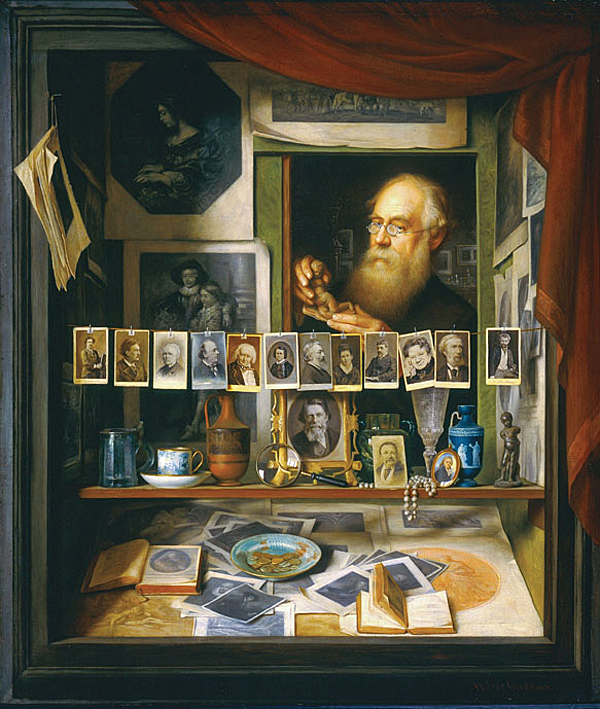In Review
 MYSTERY MAN: Admirers of the Memorial Art Gallery’s painting The Printseller’s Window set out to find out more about its artist Walter Goodman (Photo: Walter Goodman, The Printseller’s Window (1882–83)/Memorial Art Gallery)
MYSTERY MAN: Admirers of the Memorial Art Gallery’s painting The Printseller’s Window set out to find out more about its artist Walter Goodman (Photo: Walter Goodman, The Printseller’s Window (1882–83)/Memorial Art Gallery)Curators at the Memorial Art Gallery are hot on the trail of an art history mystery.
In 1998, gallery director Grant Holcomb successfully bid on the painting The Printseller’s Window at a Sotheby’s auction. A review of the auction called the painting—a large oil on canvas—“a masterpiece.”
But almost nothing was known about the artist, Walter Goodman, or the piece, which had been held in a private collection.
“It’s a major picture by an artist no one had heard of,” says Nancy Norwood, curator of European art at the gallery.
“If we didn’t recognize the artist’s name when the painting came up for auction, we certainly recognized its singular quality and impact,” Holcomb says.
Those at the Rochester museum weren’t alone in their appreciation. In 2002 the National Gallery of Art borrowed the piece for a major exhibition of trompe l’oeil—“fool the eye”—painting. Pierre Rosenberg, former director of the Louvre Museum, cited Goodman’s painting as one of 100 notable European artworks owned by American museums in his 2006 book, Only in America: 100 European Masterpieces in American Museums Unmatched in European Collections.
Intrigued by the painting’s mystery, Peter Brown, a retired attorney and member of the Memorial Art Gallery’s Board of Managers, has spent nearly the last decade tracking down information about the work and its creator.
The result is a special exhibition at the gallery, opening in August, called Walter Goodman’s The Printseller’s Window: Solving a Painter’s Puzzle.
“I wanted to know what was going on in the painting,” says Brown. “And did Goodman have a secret message in mind?”
Goodman, as Brown and Memorial Art Gallery chief curator Marjorie Searl came to learn, was an English painter, illustrator, and author who lived from 1838 to 1912. The whereabouts of most of his works are unknown. But Brown’s research—some of which he carried out in repeated trips to England—brought him into contact with Goodman descendents, who are contributing works to the exhibition. One connection was forged through a Rochester woman whose sister is married to the artist’s grandson.
The Printseller’s Window depicts a bearded elderly man—the printseller—adjusting the contents of his crowded shop window. A string of cartes de visite, photographic calling cards, from artists contemporary with Goodman runs across the painting’s middle, and their uncanny realism is perhaps the painting’s most striking example of trompe l’oeil technique.
Goodman has painted a photograph of John Ruskin on the shelf below the calling cards, and its presence is central to Brown’s interpretation of the piece. He reads The Printseller’s Window as a painter’s response to then emerging photographic technology and the debates surrounding it. Victorian cultural critic Ruskin objected to painters who made use of photography in their work, says Brown, “and I think Goodman is at odds with Ruskin, and he’s putting it in his face.”
The painting, which also alludes to Dutch still life, the commercialization of old masters’ works, and other movements within the art world, “is rich in images,” says Norwood. “There are so many ways to interpret it.”
“It’s clear Goodman was having some fun with this,” says Brown.
The exhibition opens on August 14 and runs until November 8 at the Memorial Art Gallery. For more information, visit the Web site, http://mag.rochester.edu.
